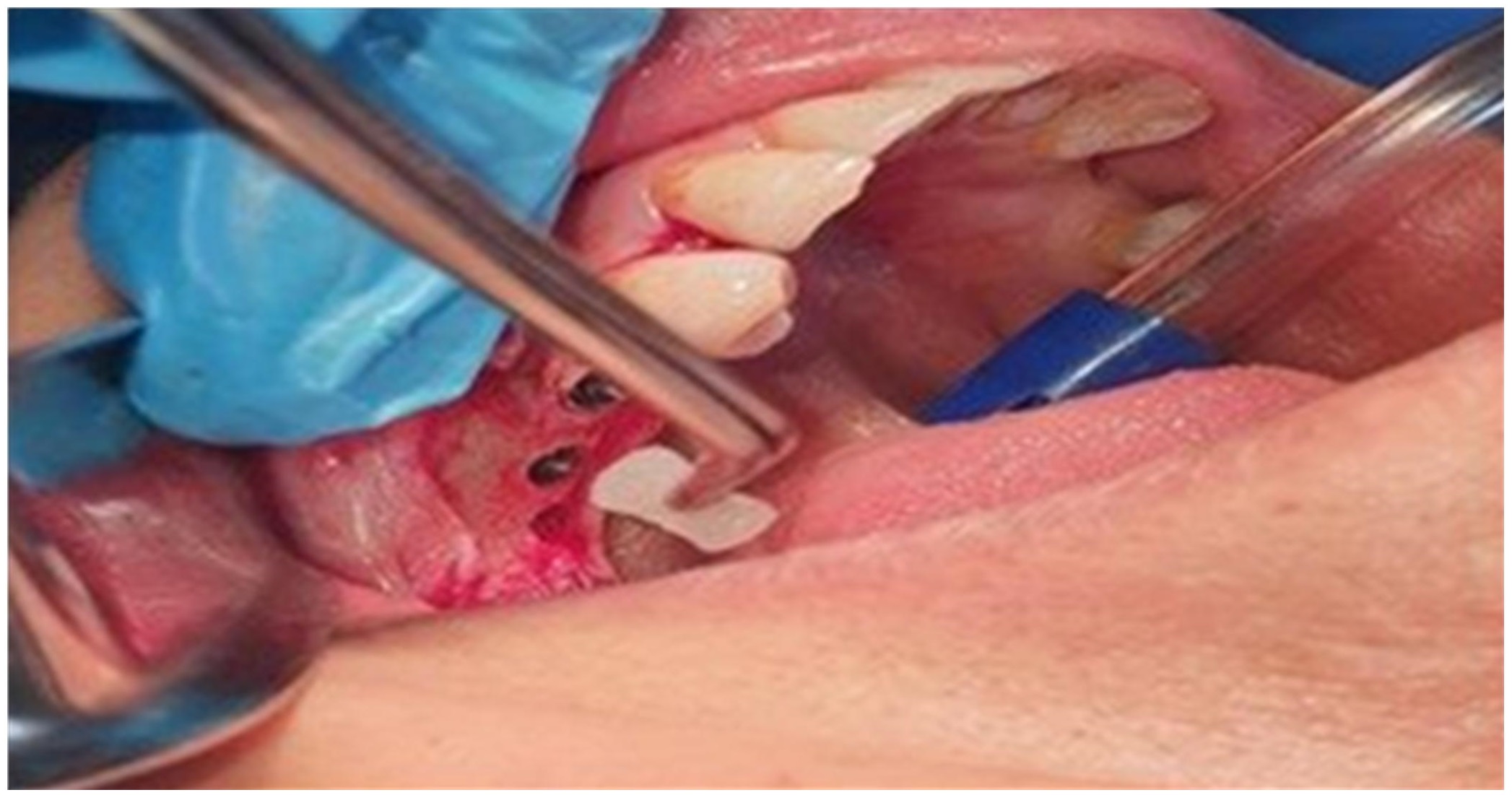Recombinant Human Bone Morphogenetic Protein-2 as Bone Additive and its Relation with the Dental Implant Dimensions and Stability: Split-Mouth Randomized Clinical Trial
DOI:
https://doi.org/10.54133/ajms.v5i.294Keywords:
Absorbable collagen sponge, Implant stability, Osseointegration, Resonance frequency analysis, rhBMP-2Abstract
Background: The bone morphogenetic protein belongs to transforming growth factor beta (TGF-β), and it is regarded as one of the biological factors that play major roles in the process of osteogenesis. Objective: To measure the effect of recombinant human bone morphogenetic protein-2 with an absorbable collagen sponge carrier (rhBMP-2/ACS) on secondary implant stability and study the relation of other parameters like implant receipt jaws, implant diameter, and implant length with implant stability. Methods: Ten participants were enrolled in the study after a selective diagnosis. Forty-seven implants were classified into two groups: the study group included twenty-three dental implants with an additive of rhBMP-2/ACS, and the control group included twenty-four dental implants without an additive. Each patient received at least two implants on each ipsilateral side. The primary implant stability was measured at the surgical phase, and the secondary implant stability was recorded after 16–24 weeks by using the Resonance Frequency Analysis device. Results: There was a weak but not significant correlation between implant dimensions and stability, except in the control group. Concerning the ISQ relation to the jaw, the mandible showed a significant increase in primary stability for the study group compared to that in the control group, but no statistical relation was recorded. Conclusion: The mandible had higher ISO values for primary stability than the maxilla in both groups, with a non-significant connection. The maxilla in both groups had improved secondary stability, whereas the mandible had decreased. (clinicaltrials.gov-NCT05719181).
Downloads
References
Goel M, Mehta R, Kumar A, Kumar V, Bhayana G, Wadhwa S. Implant surface modification and osseointegration-past, present and future. J Oral Health Commun Dent. 2014;8(2)113-118. doi: 10.5005/johcd-8-2-113. DOI: https://doi.org/10.5005/johcd-8-2-113
Atsuta I, Ayukawa Y, Kondo R, Oshiro W, Matsuura Y, Furuhashi A, et al. Soft tissue sealing around dental implants based on histological interpretation. J Prosthod Res. 2016;60(1):3-11. doi: 10.1016/j.jpor.2015.07.001. DOI: https://doi.org/10.1016/j.jpor.2015.07.001
Kanazirski N, Vladova D, Neychev D, Raycheva R, Kanazirska P. Effect of YAG laser exposure on the amorphous smear layer in the marginal zone of the osteotomy site for placement of dental screw implants: A histomorphological study. J Funct Biomater. 2023;14(7):376. doi: 10.3390/jfb14070376. DOI: https://doi.org/10.3390/jfb14070376
Lahens B, Lopez CD, Neiva RF, Bowers MM, Jimbo R, Bonfante EA, et al. The effect of osseodensification drilling for endosteal implants with different surface treatments: A study in sheep. J Biomed Mater Res. 2019;107(3):615-623. doi: 10.1002/jbm.b.34154. DOI: https://doi.org/10.1002/jbm.b.34154
Amreena Gill, PolsaniLaxman Rao. Primary stability: The password of implant integration. J Dent Implants. 2012;2(2):103-109. doi: 10.4103/0974-6781.102223. DOI: https://doi.org/10.4103/0974-6781.102223
Swami V, Vijayaraghavan V, Swami V. Current trends to measure implant stability. J Indian Prosthod Soc. 2016;16(2):124-130. doi: 10.4103/0972-4052.176539. DOI: https://doi.org/10.4103/0972-4052.176539
Antonello Falco, Marco Berardini PT. Correlation between implant geometry, implant surface, insertion torque, and primary stability: in vitro biomechanical analysis. International J Oral Maxillofac Implants. 2018;33(4):824-830. doi: 10.11607/jomi.6285. DOI: https://doi.org/10.11607/jomi.6285
Herrero-Climent M, Lemos BF, Herrero-Climent F, Falcao C, Oliveira H, Herrera M, et al. Influence of implant design and under-preparation of the implant site on implant primary stability. An in vitro study. Int J Environ Res Pub Health. 2020;17(12):1-13. doi: 10.3390/ijerph17124436. DOI: https://doi.org/10.3390/ijerph17124436
Raghavendra S, Wood MC, Taylor TD. Early wound healing around endosseous implants: a review of the literature. Int J Oral Maxillofac Implants. 2005;20(3):425-431. PMID: 15973954.
Abdullah ZA, Hassan TA. Evaluation of dental implant stability utilizing simplified versus conventional drilling technique, a clinical study. Ann Romanian Soc Cell Biol. 2021;25(3):4482-4488.
Stanbouly D, Stanbouly R, Li AYZ, Chuang SK. Design and the future of locking-taper screwless and cementless dental implants: a narrative review. Front Oral Maxillofac Med. 2022;6. doi: 10.21037/fomm-21-116. DOI: https://doi.org/10.21037/fomm-21-116
Ibraheem N, Al-Adili SS. Assessment of dental implant stability during healing period and determination of the factors that affect implant stability by means of resonance frequency analysis (Clinical study). J Baghdad Coll Dent. 2015;27(3):109-115.
Hériveau Y, Vayron,RF. Assessment of dental implant stability using resonance frequency analysis and quantitative ultrasound methods. J Prosthod Res. 2021;65(3):421-427. doi: 10.2186/jpr.JPR_D_20_00052. DOI: https://doi.org/10.2186/jpr.JPR_D_20_00052
Monje A, Insua A, Monje F, Muñoz F, Salvi GE, Buser D, et al. Diagnostic accuracy of the implant stability quotient in monitoring progressive peri‐implant bone loss: An experimental study in dogs. Clin Oral Implant Res. 2018;29(10):1016-1024. doi: 10.1111/clr.13368. DOI: https://doi.org/10.1111/clr.13368
Lages FS, Douglas-de Oliveira DW, Costa FO. Relationship between implant stability measurements obtained by insertion torque and resonance frequency analysis: A systematic review. Clin Implant Dent Relat Res. 2018;20(12):26-33. doi: 10.1111/cid.12565. DOI: https://doi.org/10.1111/cid.12565
Rosas-Díaz JC, Malpartida-Carrillo V, CórdovaLimaylla NE, Guerrero ME, Palomino-Zorrilla JJ, Cervantes-Ganoza LA, et al. Resonance frequency analysis mapping during implant healing using a nanostructured hydroxyapatite surface. J Int Soc Prevent Commun Dent. 2022;12(5). doi: 10.4103/jispcd.JISPCD_265_21. DOI: https://doi.org/10.4103/jispcd.JISPCD_265_21
Teng FY, Tai IC, Ho ML, Wang JW, Weng LW, Wang YJ, et al. Controlled release of BMP-2 from titanium with electrodeposition modification enhancing critical size bone formation. Mater Sci Engineer. 2019;105:109879. doi: 10.1016/j.msec.2019.109879. DOI: https://doi.org/10.1016/j.msec.2019.109879
Anand V, Vignesh U, Mehrotra D, Kumar S. Evaluation of bone formation using recombinant human bone morphogenetic proteins-7 in small maxillofacial bony defects. J Oral Maxillofac Pathol. 2019;23(2):208. doi: 10.4103/jomfp.JOMFP_292_18. DOI: https://doi.org/10.4103/jomfp.JOMFP_292_18
Dirzu N, Lucaciu O, Dirzu D, Soritau O, Cenariu D, Crisan B, et al. BMP-2 delivery through liposomes in bone regeneration. Clin Appl Dent Oral Health. 2022;12(3):1373. doi: 10.3390/app12031373. DOI: https://doi.org/10.3390/app12031373
Leknes KN, Yang J, Qahash M, Polimeni G, Susin G, Wikesjö UME. Alveolar ridge augmentation using implants coated with recombinant human bone morphogenetic protein-2: Radiographic observations. Clin Oral Implant Res. 2008;(19)1027-1033. doi: 10.1111/j.1600-0501.2008.01567.x. DOI: https://doi.org/10.1111/j.1600-0501.2008.01567.x
Boyne PJ, Lilly LC, Marx RE, Moy PK, Nevins M, Spagnoli DB, et al. De novo bone induction by recombinant human bone morphogenetic protein-2 (rhBMP-2) in maxillary sinus floor augmentation. J Oral Maxillofac Surg. 2005;(63)1693-1707. doi: 10.1016/j.joms.2005.08.018. DOI: https://doi.org/10.1016/j.joms.2005.08.018
Park SY, Kim KH, Kim S, Lee YM, Seol YJ. BMP-2 gene delivery-based bone regeneration in dentistry. Pharmaceutics. 2019;11(8):393. doi: 10.3390/pharmaceutics11080393. DOI: https://doi.org/10.3390/pharmaceutics11080393
Shetty PP, Chowdhary R. Comparison of the primary stability achieved by using dental implants with variable thread designs when placed using different drilling techniques. An in vitro bone modular analysis. J Osseointegr. 2023;15(1):53-61. doi: 10.23805/JO.2023.15.01.10.
Petersen RB. Methods for Data Analysis in Split-mouth Randomized Clinical Trials, a Simulation Study. A thesis submitted to the Institute of Health Policy, Management and Evaluation, University of Toronto; 2013. https://hdl.handle.net/1807/35550
Zhu H, Zhang S, Ahn C. Sample size considerations for split-mouth design. Statistic Meth Med Res. 2017;26(6):2543-2551. doi: 10.1177/0962280215601137. DOI: https://doi.org/10.1177/0962280215601137
Saturni S, Bellini F, Braido F, Paggiaro P, Sanduzzi A, Scichilone N, et al. Randomized controlled trials and real-life studies. Approaches and methodologies: a clinical point of view. Pulm Pharmacol Ther. 2014;(27)129-138. doi: 10.1016/j.pupt.2014.01.005. DOI: https://doi.org/10.1016/j.pupt.2014.01.005
Jassim RK, Abdul Rahman ZA, Fatihallah AA. The effect of implant screw coating with nano-hydroxyapatite and magnesium chloride mixture on osseointegration: Biomechanical and histological study. Int J Med Res Health Sci. 2017;6(11):41-53.
Basim H, Hassan TH. Stability and marginal bone loss of early loaded slactive implant with flapped and flapless approaches. Int J Med Dent. 2020;24(1)71-77.
Yarmohammadi R, Mortazavi H, Rahmani A, Rahmani S. Tooth loss rlated to systemic diseases. Int J Med Rev. 2015;2(4):331-337.
van Eeken P, Said C, Tahmaseb A, Wismeijer D. Resonance frequency analysis of thermal acid-etched, hydrophilic implants during first 3 months of healing and osseointegration in an early-loading protocol. Int J Oral Maxillofac Implant. 2015;30:843-850. doi: 10.11607/jomi.3985. DOI: https://doi.org/10.11607/jomi.3985
Coelho PG, Marin C, Teixeira HS, Campos FE, Gomes JB, Guastaldi F, et al. Biomechanical evaluation of undersized drilling on implant biomechanical stability at early implantation times. J Oral Maxillofac Surg. 2013;71(2):e69-75. doi: 10.1016/j.joms.2012.10.008. DOI: https://doi.org/10.1016/j.joms.2012.10.008
Aragoneses JM, Aragoneses J, Brugal VA, Gomez M, Suarez A. Relationship between implant length and implant stability of single-implant restorations: A 12-month follow-up clinical study. Medicina (Kaunas). 2020;56(6):263. doi: 10.3390/medicina56060263. DOI: https://doi.org/10.3390/medicina56060263
Kotsovilis S, Fourmousis I, Karoussis IK, Bamia C. A systematic review and meta-analysis on the effect of implant length on the survival of rough-surface dental implants. J Periodontol. 2009;80(11):1700-1718. doi: 10.1902/jop.2009.090107. DOI: https://doi.org/10.1902/jop.2009.090107
Kong L, Sun Y, Hu k, Li D, Hou R, Yang J, et al. Bivariate evaluation of cylinder implant diameter and length: a three-dimensional finite element analysis. J Prosthodont. 2008;17(4):286-293. doi: 10.1111/j.1532-849X.2007.00286.x. DOI: https://doi.org/10.1111/j.1532-849X.2007.00286.x
Lachmann S, Laval JY, Axmann D, Weber H. Influence of implant geometry on primary insertion stability and simulated peri-implant bone loss: an in vitro study using resonance frequency analysis and damping capacity assessment. Int J Oral Maxillofac Implant. 2011;26(2):347-355.
Gómez-Polo M, Ortega R, Gómez-Polo C, Martín C, Celemín A, del Río J. Does length, diameter, or bone quality affect primary and secondary stability in self-tapping dental implants? J Oral Maxillofac Surg. 2016;74(7):1344-1353. doi: 10.1016/j.joms.2016.03.011. DOI: https://doi.org/10.1016/j.joms.2016.03.011
Kim HJ, Kim YK, Joo JY, Lee JY. A resonance frequency analysis of sandblasted and acid-etched implants with different diameters: a prospective clinical study during the initial healing period. J Periodont Implant Sci. 2017;47(2):106-115. doi: 10.5051/jpis.2017.47.2.106. DOI: https://doi.org/10.5051/jpis.2017.47.2.106
Nappo A, Rengo C, Pantaleo G, Spagnuolo G, Ferrari M. Influence of Implant Dimensions and Position on Implant Stability: A Prospective Clinical Study in Maxilla Using Resonance Frequency Analysis. Appl Sci. 2019;9(5):860. doi: 10.3390/app9050860. DOI: https://doi.org/10.3390/app9050860
Bischof M, Nedir R, Szmukler-Moncler S, Bernard JP, Samson J. Implant stability measurement of delayed and immediately loaded implants during healing. Clin Oral Implant Res. 2004;15(5):529-539. doi: 10.1111/j.1600-0501.2004.01042.x. DOI: https://doi.org/10.1111/j.1600-0501.2004.01042.x
Liaje A, Ozkan YK, Vanlioğlu B. Stability and marginal bone loss with three types of early loaded implants during the first year after loading. Int J Oral Maxillofac Implant. 2012;27(1):162-172.
Al-Assaf DA, Bede SY. The effect of recipient jaw and implant dimensions on pre- and post- loading dental implant stability: A prospective clinical study. J Baghdad Coll Denti. 2021;33(4):31-37. doi: 10.26477/jbcd.v33i4.3017. DOI: https://doi.org/10.26477/jbcd.v33i4.3017

Downloads
Published
How to Cite
Issue
Section
License
Copyright (c) 2023 Al-Rafidain Journal of Medical Sciences ( ISSN 2789-3219 )

This work is licensed under a Creative Commons Attribution-NonCommercial-ShareAlike 4.0 International License.
Published by Al-Rafidain University College. This is an open access journal issued under the CC BY-NC-SA 4.0 license (https://creativecommons.org/licenses/by-nc-sa/4.0/).











